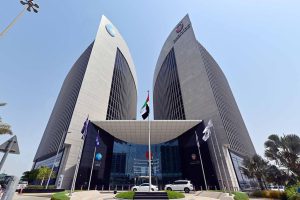ABU DHABI/WAM
Abu Dhabi Islamic Bank reported a Q1 2025 net profit before tax of AED 1.9 billion, rising 18% year-on-year, reflecting a strong balance sheet growth, coupled with increased business momentum and a sustained customer growth.
Q1 2025 net profit before tax increased 18% compared to Q4 2024, reflecting significant growth and reinforcing the positive trajectory we have built over recent quarters. Net profit after tax for Q1 2025 was AED 1.7 billion, reflecting a 18% increase compared to Q1 2024.
Revenue for Q1 2025 improved by 14% to AED 2.9 billion compared to AED 2.5 billion for Q1 2024. This exceptional growth reflects broad-based performance across all key segments. This was supported by an increase in both income from financing activities and non-funding income. The strong business volumes along with continued strength in fee-based businesses, played a significant role in this improvement.
Total assets increased by 25% year-on-year to reach AED 244 billion. This growth was driven by financing growth in both retail and corporate banking, as well as an expansion in the investment portfolio.
Customer financing grew by 28% year-on-year, representing AED 33 billion increase compared to last year and AED 8 billion increase year to date. This reflects market share gains across key segments and wholesale banking closing landmark deals.
Customer deposits rose by 25% year-on-year to AED 200 billion, compared with AED 160 billion at Q1 2024. This growth maintained a healthy funding mix, with a 12% year-on-year growth in Current and Savings Accounts (CASA), which now comprise 69% of total deposits.
Jawaan Awaidah Al Khaili, Chairman of ADIB, said: “We started the year with a strong performance, continuing the positive trajectory built over previous quarters. Our results are a clear reflection of our ability to grow profitably and execute our strategy with discipline.”
This outstanding performance was underpinned by strong revenue growth across all segments, improved cost efficiency and the best asset quality metrics we’ve seen to date, he added.
 The Gulf Time Newspaper One of the finest business newspapers in the UAE brought to you by our professional writers and editors.
The Gulf Time Newspaper One of the finest business newspapers in the UAE brought to you by our professional writers and editors.
